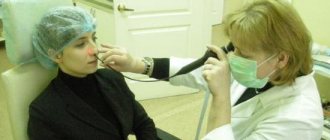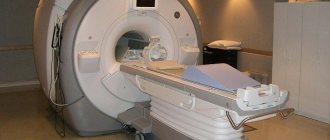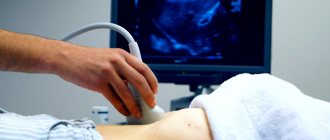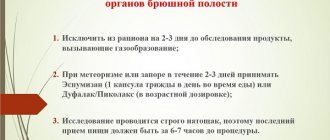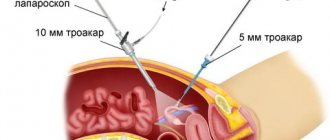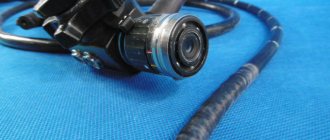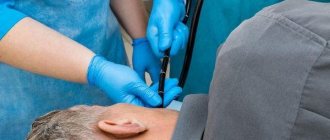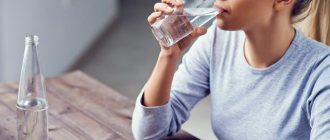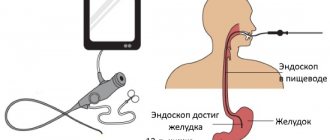4 minutes Author: Lyubov Dobretsova 37345
FGDS or fibrogastroduodenoscopy is the most informative gastroenterological diagnostic method. The examination allows you to identify diseases in the initial period of their development. Using gastroscopy, the presence of cancerous tumors, erosions, stenosis, and ulcers is diagnosed.
To obtain the most accurate results, special preparation for the examination is required. A few days before the procedure, the patient switches to a dietary diet, twelve hours before he stops eating, and an hour before he stops drinking liquids. The doctor informs the patient in detail about all preparatory measures when issuing a referral for examination.
FGDS gives the person being examined quite unpleasant sensations, which may accompany him for some time after the procedure. Therefore, many are concerned about questions related to the post-procedure period: how long after gastroscopy can you eat? How to eat properly? What complications may arise?
Diet issues after fibrogastroduodenoscopy
The main symptoms that patients who underwent examinations complain about are discomfort in the throat and esophagus. In this regard, even after forced preliminary fasting, most people do not experience a strong desire for food. In any case, eating or drinking any liquid (including water) is not recommended for an hour after a gastroenterological examination.
This is explained by the inhibition of the swallowing reflex, which appears as a result of treating the throat with a local anesthetic before inserting the endoscopic tube. A person may simply choke on food or drink. In addition, under the influence of the anesthetic, the tongue and sense of taste are lost for some time. There are no strict dietary restrictions.
To alleviate your general somatic condition, you should follow some rules that will help you figure out what and when you can eat after gastroscopy:
- The first meal should not be plentiful (200-250 grams will be quite enough).
- Preference should be given to lighter dishes. These can be fermented milk products (soft cottage cheese, yogurt, fermented baked milk), creamy soups, oatmeal or semolina porridge.
- Solid food is not recommended. Hard pieces can damage the irritated mucous membrane of the throat and esophagus.
- You should not fast after FGDS for more than two hours. The stomach must be returned to normal operation.
- As for tobacco products, it is also necessary to wait an hour and not smoke immediately after the examination.
If during the examination biological material was taken for laboratory analysis (biopsy), the recommended time range of fasting after fibrogastroduodenoscopy is two hours. At the same time, it is prohibited to consume hot foods and drinks. Well-heated food can be eaten when the injured mucous membrane has recovered. Usually this happens within 24 hours.
How is diagnosis carried out?
To know how to properly prepare for gastroscopy of the stomach, you need to understand how it is performed. This will help you understand what factors can change the reliability of the final indicators.
All information that the endoscope camera sees is used to make an accurate diagnosis and monitor the course of treatment
To carry out the examination, local anesthesia is used, and in some cases the procedure is carried out in a state of medicated sleep. The traditional method of gastroscopy lasts no more than 15 minutes. The patient is placed on his left side, and a mouthguard (a special device) is placed between the teeth, allowing the insertion of an endoscopic probe with a video camera. To gradually penetrate the esophagus, the patient takes a deep sip, after which saliva cannot be swallowed - excess is removed by suction.
Biopsy forceps and other instruments can be attached to the probe, allowing not only to obtain an image, but also to perform the necessary medical procedures.
Additional Tips
During the procedure, the digestive organs are exposed to mechanical stress from the endoscope tube. A foreign body, to some extent, disrupts the natural state of the gastrointestinal tract, therefore, after gastroscopy, it would be useful to maintain a dietary diet for 24–48 hours.
Typically, a gastroenterologist advises following the “table No. 1” diet. This is a gentle diet for people suffering from chronic gastrointestinal pathologies.
The basic principles of the diet are:
- Do not be greedy in food, that is, do not overeat.
- Do not consume food or liquid that is very hot. Do not burn the esophagus or stomach.
- Choose the right culinary method for processing food (cooking, steam mode, stewing). Fried foods should be excluded.
- Avoid hot spices, marinades and seasonings.
- Replace fatty meat with dietary chicken, turkey or lean beef;
- Avoid coffee, baked goods and soda.
- Give preference to stewed vegetables, cereals, pasta.
- Do not flavor food with mayonnaise-based sauces, ketchups, mustard, etc.
Based on the results of FGDS, the doctor will diagnose the disease, prescribe the necessary medications, and help adjust the diet. If the examination does not reveal any serious pathologies, you can return to your normal diet. The transition should not take place in a forced mode. Solid and heavy foods are introduced gradually to avoid indigestion and dyspepsia (difficult and painful digestion).
If, while following all the nutritional rules, the patient experiences pain in the gastrointestinal tract, irregular bowel movements, or diarrhea for more than three days, the doctor should be notified. The procedure may have had some complications.
Fibrogastroduodenoscopy is an endoscopic technique for examining the cavity of the upper part of the digestive system. But doctors rarely tell their patients about the diet after the study. Therefore, this article explains in the most informative way the question of how to eat after an FGDS and what to do to prevent complications.
FGDS has become the gold standard for diagnosing diseases of the esophagus, stomach and duodenum, and is therefore prescribed more and more often. Before conducting the test, doctors often tell patients about the nuances of preparing for the study. This necessarily includes dietary correction to avoid stagnation of food masses in the stomach during endoscopic diagnosis. This increases the information content of the diagnosis.
But at the same time, instructions are rarely given regarding diet after FGDS (although it remains extremely important). Therefore, patients do not know when they can have lunch, what foods they should avoid, or whether alcoholic or carbonated drinks are allowed.
Basic principles of nutrition after gastroscopy of the stomach
It is rare that the study is performed on completely healthy patients. Therefore, the nature of the diet after fibrogastroduodenoscopy is determined by the nature of the patient’s disease .
Nutrition in the period after FGDS in most cases resembles Pevzner’s diet No. 1. The nature of the violation of secretory function (hyper- or hypoproduction of hydrochloric acid) is of greatest importance. But even regardless of this, nutrition after FGDS is based on several key principles:
- Reducing the amount of food at one time , and their frequency (up to 5-6 times a day). This reduces the load on the gastric mucosa.
- Chemical protection . It is necessary to exclude from the diet foods that can damage the mucous membrane (for example, citrus fruits or alcoholic drinks).
- Thermal protection . All dishes served to the patient should be at a comfortable temperature (35-45°C). This prevents damage to the stomach wall from getting worse.
- Balance . Despite the exclusion of certain foods, the diet must maintain the required amount of nutrients (carbohydrates, proteins, fats), vitamins and microelements.
- Patient-oriented diet . The diet should take into account the patient’s preferences, since only then will he adhere to it.
Other factors play a much more important role - the presence of Helicobacter pylori infection, long-term use of certain groups of medications and concomitant diseases. These must be taken into account when preparing a diet after fibrogastroduodenoscopy.
When should you not eat or drink?
It all depends on the procedure used. Typically, FGDS is done under local anesthesia of the posterior wall of the oropharynx. Then (if there are no complications and surgery is not planned) you can eat 30 minutes after completion of the procedure.
If a biopsy of the mucous membrane was performed, then you need to refrain from eating for 2 hours after the procedure. All dishes should be warm, but not hot, as otherwise this will cause injury to the stomach wall.
, FGDS has increasingly been performed (medicated sleep).
Considering the duration of action of the drug used for the procedure, the first meal is recommended after 90-120 minutes. Sometimes FGDS is done under general anesthesia. Then, after completing the procedure, the patient gradually withdraws from the administered medications and may complain of nausea, dizziness, and severe drowsiness for several hours. Therefore, the first feeding occurs after approximately 4-8 hours. At the same time, it should be as simple as possible (for example, buckwheat porridge) so as not to provoke vomiting.
FGDS is often performed on children under anesthesia or sedation. You can read about the features of this procedure by following the link.
Valuable recommendations
It is very important to come to the procedure in the correct clothing. It should be spacious, one that does not hinder movement, not a brand. It is inappropriate to wear ties for such an “event”. You also need to give up tight belts, tight blouses, jewelry and costume jewelry. In general, nothing superfluous.
For a successful procedure such as gastroscopy, moral preparation is no less important. The patient should appear in a good mood, not worry, not be nervous, not be afraid.
It is better to arrive for the procedure a few minutes before the appointed time. There is no need to sit under the door for a long time, otherwise you will hear extraneous sounds coming from the manipulation room, and your courageous mood will disappear somewhere. However, you shouldn’t be late, otherwise you’ll miss your turn and again you’ll start to get nervous and worried.
Prohibited Products
Carbonated drinks (including alcoholic drinks, kvass, lemonade and mineral water) from the diet that is recommended after FGDS It is also prohibited to drink strong tea or coffee as drinks, as they can stimulate the production of hydrochloric acid by the gastric mucosa.
Also, meat (smoking) broths can increase acidity, so they are also not included in the diet in the presence of hypersecretory conditions. Fatty meats (pork, duck, goose) have a similar effect. The diet also does not include soups with a large amount of spices, red borscht and okroshka.
Gels and suspensions will help cope with stomach pain. Which? This article will tell you about this.
With high acidity, fermented milk products (kefir, fermented baked milk) are not recommended. They can potentiate the effect of the aggression factor (hydrochloric acid) on the mucous membrane. Some types of hard cheese contain a large amount of spices and therefore should not be eaten.
If you look at vegetables, onions, radishes, rutabaga, cucumbers, spinach, and white cabbage are not included in the diet.
You should avoid eating peanuts, legumes, and nuts. All sour berries (blueberries, strawberries, lingonberries, gooseberries, currants) and citrus fruits are also undesirable.
Canned and pickled foods, most spices, mustard, tomato paste, horseradish, ketchup, and sauces are completely removed from the diet.
Additionally, in the first days after the study, it is advisable to avoid the following products :
- persimmons;
- grapes;
- fatty types of fish fillets;
- corn, pearl barley or barley;
- fried eggs;
- dried fruits;
- sweet products containing chocolate.
What can and cannot be eaten before gastroscopy?
The day before the diagnostic procedure, you must follow a special diet. The following dishes are allowed:
- buckwheat and oatmeal porridge;
- eggs;
- mashed potatoes;
- boiled chicken meat;
- low fat cottage cheese and sour cream;
- baked or boiled vegetables;
- soups;
- vegetable and fruit juices.
On the eve of gastroscopy, you must avoid eating fatty foods, which include the following foods:
- mayonnaise;
- cream;
- salo;
- blue cheese;
- fatty fish;
- pork
Smoking is strictly prohibited on the day of gastroscopy.
Authorized Products
Preference should be given to lean meats (for example, beef, turkey, horse meat, or rabbit meat). The most optimal preparation option is boiled (you can make zrazy, steamed cutlets, meatballs or soufflé). In this case, you need to ensure that all solid particles (bones, cartilage) are removed from the food. If the dish is prepared for older people, you can chop it more thoroughly to avoid possible digestive difficulties.
Do the same with fish. Low-fat types are recommended. You can cook pike perch, pollock, pike, flounder, carp, hake, cod, mullet. When cleaning fish, you should try to remove all bones and scales.
Bakery products in the diet include day-old white bread or buns without sour filling . It is also recommended to give preference to dry, unpalatable cookies, cheesecakes or biscuits without chocolate. If necessary, they can be dried a little at home.
What is recommended for decreased secretion?
If FGDS revealed atrophic gastritis with reduced secretory activity, then the diet has some features. It generally repeats the usual one, but the diet includes foods that stimulate the functioning of the parietal cells of the stomach and the production of hydrochloric acid :
- washed sauerkraut;
- weak coffee, cocoa with water;
- butter;
- meat pates;
- zucchini, beets, cabbage;
- citrus fruits (tangerines, oranges);
- fruit compotes.
When is alcohol allowed?
Alcohol is one of the most important factors in damage to the mucous membrane. It is against the background of its abuse that acute ulcers or inflammatory processes can often be detected in patients.
Therefore, it is advisable to completely exclude alcoholic beverages from the diet after the procedure for the period of clinical symptoms. If the study was carried out on a healthy person, then it is advisable to refrain from using them on the day of diagnosis.
Alcoholic drinks can be consumed in moderate doses only after the patient has fully recovered.
What to take with you
Take things with you to the hospital that may be needed during the diagnosis:
- sheet;
- towel;
- napkins;
- medical insurance policy;
- referral from a doctor;
- an outpatient card or the results of previous examinations of the digestive tract.
In many clinics, at the reception desk, patients are given instructions containing information about proper preparation and a list of necessary things.
Features of diet No. 1
Pevzner's diet No. 1 is designed for diseases of the digestive system, which are accompanied by a sharp increase in acidity . It is the one most often prescribed after the procedure. Its main characteristics are presented in the following table:
| Indications | Hypersecretory gastritis (with increased acidity), gastroesophageal reflux disease, gastric or duodenal ulcer in the compensation phase |
| Target | Protect the mucous membrane from exposure to factors of chemical, temperature and mechanical aggression |
| Calorie content | 2800-3300 kcal (if necessary, it can be increased to 3500 kcal) |
| Cooking method | All solid particles are first removed from the products. Dishes are steamed, boiled or baked |
| Meal frequency | 5-6 times a day |
| Approximate composition of nutrients | Carbohydrates – 400-460 g, proteins – 85-130 g, fats – 90-120 g |
| Restrictions on salt intake | Moderate (no more than 12 g per day), it is necessary to take into account the presence of concomitant cardiovascular or renal pathology |
| Volume of fluid consumed | 1.5-2.0 l |
| Serving Size | Determined individually (based on age, gender and physical activity) |
The duration of the diet depends on the severity of symptoms. If FGDS was carried out against the background of compensation, to monitor the effectiveness of treatment or for preventive purposes, then dietary restrictions should not be maintained for more than 2 days.
On average, it must be observed for about 5-7 days for acute gastritis, 7-10 for chronic gastritis, and 14 for peptic ulcer disease.
In addition to following a proper diet, you can speed up the process of restoring stomach comfort with 10 recipes for treating gastritis.
Example menu
The daily menu after the diagnostic event looks approximately as follows:
- First breakfast (8-9 am) - includes oatmeal cooked in water, two soft-boiled eggs and a glass of still table mineral water.
- Second breakfast (11 o'clock in the afternoon) - consists of slightly warmed cottage cheese with sugar (but without butter) and tea with milk.
- Lunch (2 p.m.) – served rice vegetable soup (can be served with boiled lean meat), mashed potatoes, a steamed cutlet, several baked fruits (apples, pears) and weak tea.
- snack (5 p.m.) – enough dry biscuits (bagels) and a glass of non-sour yogurt.
- Dinner (20 pm) - the patient eats buckwheat porridge (without oil), boiled fillet of a lean fish, a glass of sweet juice.
- Before bed (22 hours) – baked apple with weak tea.
Water intake issue
It is usually believed that it is enough for a patient to consume about 1.5 liters of fluid per day. This must be done to avoid dehydration.
This volume also includes water, which is included in soups, cereals and other dishes. But other factors also need to be taken into account.
Features of nutrition before gastroscopy
FGDS of the stomach (fibrogastroduodenoscopy or FGS - fibrogastroscopy) is considered a very unpleasant procedure. During gastroscopy, a special tube with a camera is inserted through the oral cavity into the stomach and intestines, which allows you to examine the mucous membrane from the inside. Every patient should know that not all food can be consumed before and after the study.
To obtain accurate information about the state of the digestive system, you must follow these rules:
- Before gastroscopy, you should not eat anything for fourteen hours before the examination. It is very important that the food is completely digested and the stomach is empty.
- If the patient cannot withstand such a period, then the last meal should be a maximum of eight hours before the test. Failure to comply with this rule will distort the results of the study.
- The last sip of water can be taken three hours before the procedure. The presence of liquid or food in the stomach will cause vomiting during a gastroscopy. Before the test, it is not advisable to drink coffee or tea with milk, as they are digested more slowly.
- People who smoke should refrain from doing so. The entry of nicotine into the stomach leads to increased mucus production, which can negatively affect the results of gastroscopy.
- You should also not take medications; only intravenous and intramuscular medications are allowed.
It is necessary to take a towel with you to the procedure and wear loose clothing that will not increase discomfort. It is important to follow all recommendations of a specialist.
Preparation
This is one of the most important factors in ensuring correct and safe gastroscopy. According to official statistics, about 1-2% of subjects prepare poorly for the procedure, which leads to the complication and lengthening of the diagnostic study. Moreover, such an irresponsible approach can lead to the impossibility of performing gastroscopy. As a rule, improper preparation for gastroscopy is associated with insufficient cleansing of the hollow organs of the gastrointestinal tract. Preparatory activities are conventionally divided into 2 large groups, each of which is important for diagnosis.
Nutrition after FGDS
“What should I eat after gastroscopy?” - patients often ask. Most people have no desire to eat after gastroscopy. Your doctor will tell you how long and what you can use.
There are no special restrictions regarding abstaining from food. You can eat right away, but the food should be light.
You need to eat like this after gastroscopy:
- a light snack of boiled porridge or yogurt is allowed;
- You can drink weak tea or unsweetened juice;
- for several days it is advisable not to eat fatty or smoked foods, as well as fast food;
- If after the procedure you feel a burning sensation, a stomach ache or discomfort in the throat, it is advised to drink several glasses of clean water at once.
Many patients immediately after the study begin to eat the same as before, but this is not advisable. Each person’s body adapts differently after gastroscopy. If the patient ate heavy food, then after the procedure you should not immediately return to it. It is better to consult on this issue with the specialist who conducted the study. He will tell you what foods to watch out for. Following the recommendations will prevent the development of possible complications.
Price of the procedure
I wonder how much gastroscopy of the stomach costs? This question worries many people. The price of the procedure depends on where the manipulation is performed: in a private clinic or in a public hospital, on the complexity of the work performed, additional tests, and the use of painkillers. The equipment used is also of great importance: if it is the latest equipment, then the cost of gastroscopy will be higher than when using an older device. Also, the cost of the procedure is influenced by the professionalism and qualifications of the doctors who will perform the procedure called gastroscopy. Preparation for the procedure in this case will also include collecting money.
The approximate price of gastroscopy of the stomach without the use of anesthesia is approximately 2000–2300 rubles. But if you additionally take into account the use of anesthesia, then the cost can vary between 2500–2700 rubles.
